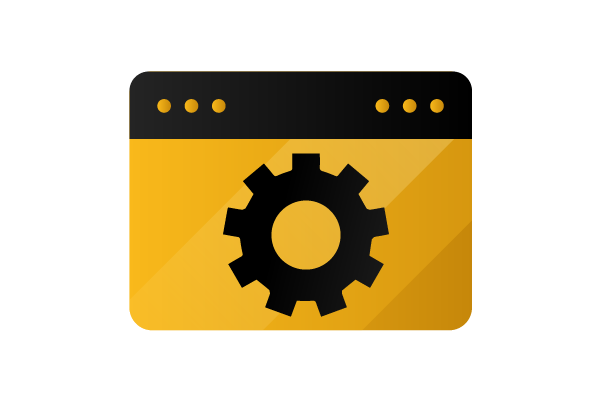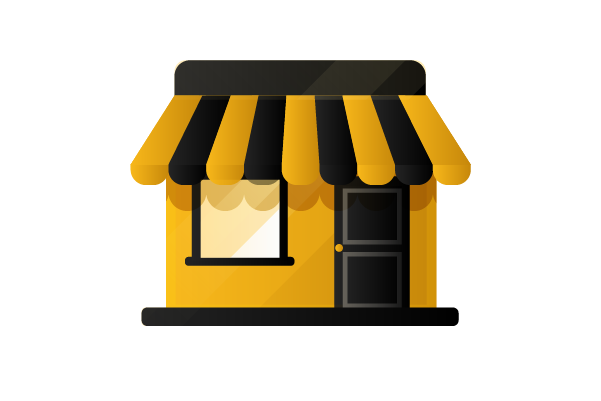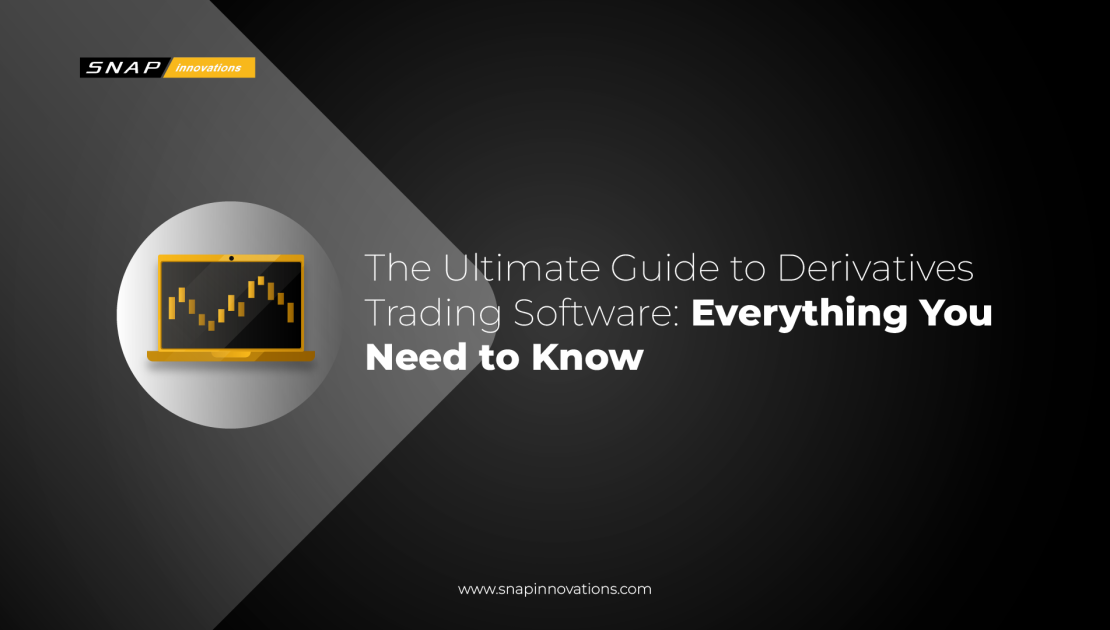In today’s rapidly evolving financial world, efficiency and precision have become paramount. This is where derivatives trading software enters the picture, acting as an invaluable tool for traders and investors alike. Whether you’re a seasoned pro or just stepping into the realm of financial markets, understanding how this software functions can give you a competitive edge.
The complexities of derivatives trading can be daunting. However, with the right software, these intricacies become manageable, allowing traders to make informed decisions. In this guide, we will walk you through everything you need to know about derivatives trading software, ensuring you’re well-equipped to navigate this fascinating world.
What is Derivatives Trading Software?
 Derivatives trading software is a specialized platform designed to manage and facilitate the trading of financial derivatives. These are financial instruments, like futures or options, whose value derives from an underlying asset.
Derivatives trading software is a specialized platform designed to manage and facilitate the trading of financial derivatives. These are financial instruments, like futures or options, whose value derives from an underlying asset.
Choosing the right software is crucial. It aids in real-time monitoring, analysis, and execution of trades, ensuring that traders have all the necessary information at their fingertips. It’s not just about executing trades; it’s about doing so efficiently, accurately, and with the right strategies in place.
With the global financial markets becoming more interconnected, the demand for robust and versatile trading platforms has skyrocketed. The beauty of these software systems is that they cater to both individual traders and large institutions, providing tailored solutions for various trading needs.
Also Read: AI Development: The New Era of Technological Innovation
The Key Features of Top-notch Derivatives Trading Software
Selecting the optimal derivatives trading software can be a pivotal decision that significantly influences your trading experience and success rate. While the market is saturated with various offerings, there are key features that set premium software apart from the rest. It’s imperative to look beyond aesthetic appeal and marketing hype to discern the functionality, reliability, and user experience provided by the software.
1. Real-time Data Streaming
In the fast-paced, dynamic environment of derivatives trading, the importance of receiving real-time data cannot be overstated. Instantaneous data streaming is a non-negotiable feature for top-notch trading software. This capability ensures that traders are continuously apprised of the latest market movements and trends.
Real-time data streaming provides a constant flow of price quotes, market news, and essential alerts. With up-to-the-second updates at their fingertips, traders can make informed, timely decisions and execute trades with precision and confidence. This feature is particularly crucial for day traders and those employing high-frequency trading strategies, where every second counts.
2. Advanced Analytical Tools
Sophisticated analytical tools are another hallmark of superior derivatives trading software. These indispensable resources arm traders with vital insights, assisting them in accurately forecasting market trends, identifying potential shifts, and devising effective trading strategies.
Whether it’s deploying advanced charting tools, utilizing historical data analysis, or integrating artificial intelligence for predictive analysis, these advanced analytical components are instrumental. They not only facilitate traders in comprehending the market landscape but also in anticipating future movements and making strategic trading decisions proactively.
3. User-friendly Interface
A software’s interface should be as efficient and straightforward as possible to accommodate traders of all levels. An ideal platform boasts an intuitive, user-friendly interface that doesn’t compromise on depth and complexity for experienced traders. This delicate balance ensures that beginners can quickly acclimate while seasoned traders can execute advanced strategies effortlessly.
Navigational ease, visual appeal, and logical layout are critical considerations. The interface should seamlessly guide users through functions and features without overwhelming them, making the trading process smoother and more enjoyable.
4.Security Measures
Security is a paramount concern in the realm of financial trading. Premium derivatives trading software invests heavily in implementing robust security measures to safeguard users’ sensitive data and financial assets. Given the frequent target of trading platforms by malicious entities, these security protocols are not just desirable but absolutely essential.
End-to-end encryption ensures that data transmitted over the network is unreadable to unauthorized individuals. Two-factor authentication (2FA) adds an extra layer of security, requiring users to verify their identity through a second device. Regular system audits, firewall protections, and timely software updates collectively contribute to creating a secure trading environment, protecting users from potential threats and breaches.
How Derivatives Trading Software is Revolutionizing the Market
 The introduction of derivatives trading software marks a seismic shift in the trading arena, epitomizing how essential technological evolution has become in this domain. In an industry where efficiency and speed are paramount, adopting advanced technology is not merely an embellishment but an absolute necessity. This adoption has catalyzed a transformative wave, revolutionizing traditional practices and setting new standards for efficiency and accessibility in trading.
The introduction of derivatives trading software marks a seismic shift in the trading arena, epitomizing how essential technological evolution has become in this domain. In an industry where efficiency and speed are paramount, adopting advanced technology is not merely an embellishment but an absolute necessity. This adoption has catalyzed a transformative wave, revolutionizing traditional practices and setting new standards for efficiency and accessibility in trading.
1. Global Accessibility and Remote Trading
One of the monumental advancements ushered in by derivatives trading software is the ability for traders to execute transactions from virtually anywhere around the globe. This newfound flexibility is invaluable, liberating traders from the confines of physical trading floors and the traditional reliance on incessant phone calls to brokers and exchanges.
Through intuitive, feature-rich platforms, traders can now access real-time market data, engage in analytical processes, and initiate trades with just a few clicks or taps. Such ubiquity of trading tools and information provides unprecedented convenience and enables swift response to market fluctuations, affording traders the capacity to capitalize on fleeting opportunities.
2. Consolidation of Tools and Features
The innovative design of contemporary derivatives trading software consolidates myriad functions and tools into a unified, cohesive platform. This consolidation eliminates the necessity of juggling multiple applications or services, streamlining the trading process to facilitate a smoother and more efficient experience.
Within these integrated platforms, traders have immediate access to a wealth of features including market analytics, order execution mechanisms, and portfolio management tools, all meticulously organized and presented through user-friendly interfaces. This integrated approach not only simplifies navigation but also enhances the trader’s control over their activities, ultimately contributing to more informed and strategic decision-making.
3. AI and Machine Learning Integration
Another frontier in which derivatives trading software is making significant inroads is the integration of Artificial Intelligence (AI) and Machine Learning (ML). These advanced technologies are increasingly becoming integral components of trading platforms, providing unparalleled support in predictive analysis and algorithmic trading.
AI and ML algorithms sift through massive datasets at lightning speeds, identifying patterns and trends that are imperceptible to the human eye. They furnish traders with valuable insights and forecasts, empowering them to formulate and implement trading strategies with heightened accuracy and confidence. Furthermore, algorithmic trading enables the execution of trades at optimal moments, maximizing profitability while mitigating risks.
These technologies not only significantly increase the probability of generating profits but also introduce automation to various trading aspects. This infusion of automation alleviates traders from the burden of micro-managing every facet of their operations, allowing them to focus on refining their strategies and responding to significant market events.
The Advantages of Using Derivatives Trading Software
Utilizing derivatives trading software brings forth a multitude of advantages, playing a crucial role in facilitating accurate and efficient trading activities. One of the standout features is Accurate Order Execution, where automated processes significantly decrease the likelihood of manual errors. This accuracy is pivotal for traders as it provides a reliable trading experience, allowing them to execute orders with confidence, knowing that each action is carried out with precision and aligned with their intended strategies.
With a framework designed for Customization and Scalability, the software efficiently caters to the diverse needs of its user base. Whether you are an individual trader just starting or a well-established trading institution, the software can be meticulously tailored to meet your specific requirements. It offers a user-friendly experience for beginners while possessing the capability to scale and incorporate advanced features as traders refine and expand their strategies over time. This dynamic and adaptable nature of derivatives trading software ensures that it remains a valuable tool for traders at every level, providing a suite of functions designed to evolve with the user’s growing needs and expertise.
Cost Efficiency is another compelling advantage offered by these platforms. Engaging with derivatives trading software often proves to be more cost-effective in the long run. Not only does it streamline the trading process by reducing the need for various intermediaries, which in turn lowers associated fees, but many software options also present competitive pricing structures. Some even provide free access to essential features for those who are new to the trading arena. This approach makes entry into the world of trading more accessible and affordable, providing value not just in terms of monetary savings but also in the form of an efficient trading process.
Finally, derivatives trading software opens up avenues for Global Market Access. Traders are no longer confined to participating in their domestic markets; the software empowers them to engage with and execute trades in markets across the globe with ease. Whether a user wishes to trade in the Asian markets from Europe, or vice versa, global markets become readily accessible at the click of a button. This accessibility not only broadens the scope for trading opportunities but also allows traders to diversify their portfolios by investing in different markets, further maximizing the potential for profitability.
In conclusion, the adoption of derivatives trading software yields significant benefits, offering a harmonious blend of accuracy, customization, cost-efficiency, and broad market access. Each of these advantages plays a pivotal role in enhancing the trading experience, making derivatives trading software an indispensable asset for traders looking to navigate the complex and fast-paced financial landscape successfully.
Mistakes to Avoid When Choosing Derivatives Trading Software
 When selecting derivatives trading software, it’s imperative to avoid common mistakes that could adversely affect your trading experience. One critical error is Overlooking User Reviews. User reviews serve as a valuable resource, offering insights and feedback from individuals who have firsthand experience with the software. These reviews often highlight both the positive aspects and potential drawbacks of the platform, providing a well-rounded view that can guide your decision-making process. Neglecting to consider the experiences and recommendations of existing users can lead you to choose software that might not align with your trading objectives and requirements.
When selecting derivatives trading software, it’s imperative to avoid common mistakes that could adversely affect your trading experience. One critical error is Overlooking User Reviews. User reviews serve as a valuable resource, offering insights and feedback from individuals who have firsthand experience with the software. These reviews often highlight both the positive aspects and potential drawbacks of the platform, providing a well-rounded view that can guide your decision-making process. Neglecting to consider the experiences and recommendations of existing users can lead you to choose software that might not align with your trading objectives and requirements.
Another significant oversight is Ignoring Update Frequencies. The frequency with which software is updated is a telling indicator of the developer’s commitment to maintaining a platform that not only meets the current needs of traders but also adapts to the ever-changing trading environment. Regular updates typically include improved features, enhanced security measures, and fixes for any bugs or issues that users might encounter. A development team that actively releases updates is likely more attuned to the needs and concerns of its user base, striving to offer a product that is reliable, secure, and equipped with the latest tools and features. Therefore, it’s crucial to opt for software that receives consistent updates, as this reflects a proactive approach to improving and refining the platform.
Thirdly, a common misstep is Choosing Based on Price Alone. While cost is undoubtedly a significant factor, making a decision based solely on price is risky. Low-cost or free software might seem appealing, but it’s essential to assess whether these options provide the features, security, and reliability you need to engage in trading effectively. Sometimes, investing in more expensive software might be justifiable if it offers superior features and greater reliability. Thus, it’s crucial to strike a balance between cost and value, ensuring you select software that offers robust functionality and dependable performance at a reasonable price.
Lastly, Overestimating Your Needs can also lead to a poor software choice. While advanced features and tools can be enticing, it’s important to realistically assess your skill level and choose software that aligns with your current trading capabilities and knowledge. Opting for a platform with advanced functionalities that you don’t need or understand can lead to confusion and mistakes in the trading process. It’s advisable to select software that matches your skill level and offers features that you will utilize. As your skills and knowledge expand, you can then consider switching to more advanced software.
The Future of Derivatives Trading Software
The future looks promising. With the rapid strides in technology, we can expect more integration of AI and machine learning, paving the way for smarter trading solutions.
Virtual Reality (VR) might soon be a part of the trading experience, allowing traders to immerse themselves in a virtual trading floor. The blending of the physical and digital realms is on the horizon.
Blockchain and decentralized finance (DeFi) are other frontiers that derivatives trading software is likely to embrace, offering more transparency and reducing counterparty risks.
Lastly, expect more mobile-centric solutions. As the world moves towards mobile-first solutions, trading software will be no exception.
Read Next: Spread Trader: Exploring the Art of Strategic Trading
Conclusion:
The world of derivatives trading has been transformed by the advent of specialized software. What was once an esoteric field limited to professionals is now accessible to anyone with the interest and the right tools. With the right derivatives trading software by your side, the complex becomes comprehensible, the global becomes local, and opportunities multiply.
So, whether you’re taking your first steps into the trading world or looking to enhance your existing strategies, understanding and leveraging the capabilities of derivatives trading software can be your key to unlocking new horizons in the financial markets. Embrace the future, and happy trading!

